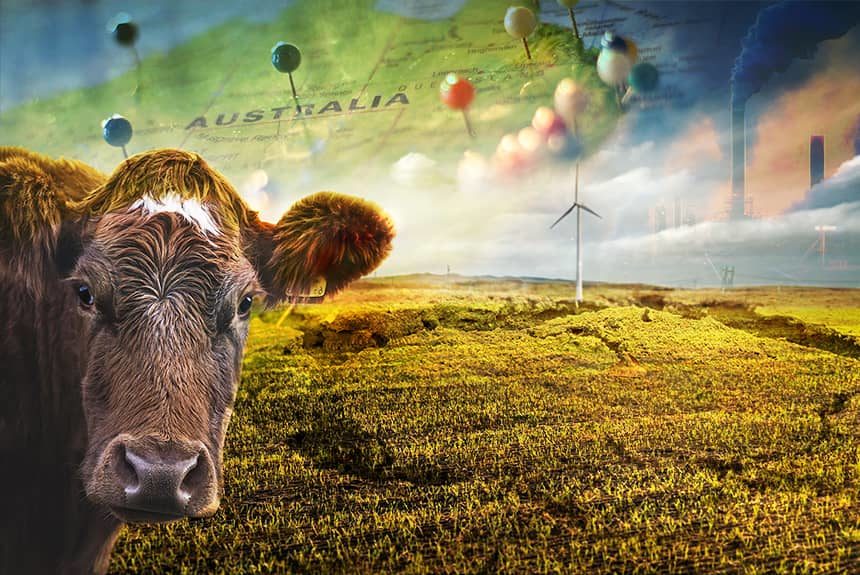The publication of the IPCC’s 6th Assessment Report affirms that the world’s climate has risen 1.1 °C since the Industrial Revolution began and is on track to exceed the 1.5°C temperature rise limit by 2030.
The report says Australia has already warmed by 1.4°C ahead of global warming averages.
In the Australasia region, this warming will mean increased fire weather, heavy rainfall and river floods, an increase in sand storms and dust storms, more widespread heatwaves and drought, and a decrease in precipitation in southwest Australia.
According to the report, rainfall has decreased in South Australia. It projects a reduction in mean rainfall, increased aridity, and future meteorological, agricultural, and ecological droughts.
An article in ABC News shares stories on how farmers in the Eyre Peninsula, South Australia, cope with changing rainfall patterns and dry conditions due to climate change. The peninsula’s economy heavily relies upon agriculture, with growing aquaculture, mining, and tourism sectors.
Farmers have persisted through water challenges and droughts for many generations, altering their farming methods to cope with climatic conditions.
Climate change will undoubtedly put more pressure on these farmers in the coming years, but they remain optimistic, believing they can cope with whatever comes their way.
Bruce Heddle is experimenting with two farming methods to grow wheat: no–tilling and tilling.
The advantage of tilling is that the crop will need fewer herbicides as the grass has been removed by turning the soil. However, the tradeoff is that the earth will dry out quickly as water escapes when the soil is tilled and is more prone to erosion.
Bruce uses a soil monitoring system on his farm to monitor soil moisture and receives data from this phone. Soil moisture is crucial to farmers in low-rainfall zone areas.
Water resources are tight in the area, and good rain is becoming fickle, so farmers and residents need ingenious ways to store and trap water moisture as long as possible until good rain comes.
Farmers do this by leaving a soil cover from the previous crop’s residue or killing the summer weeds, which suck up moisture in the ground.
These soil-trapping techniques can help farmers recover a harvest and survive droughts until there is good rain, as Gareth and Roanne Scholz have experienced.
When the family started farming, they went through three years of consecutive droughts before the following year’s drought broke off massively, giving them the best harvest ever. But during the years of droughts, the Scholz were lucky enough to harvest the seed they sowed.
According to Peter Hayman, a climate applications scientist at SARDI and study co-author, the IPCC 6th Assessment Report projects a warmer future, but how this will affect rainfall patterns is uncertain.
He says farmers can adapt to low drying levels but will struggle with severe ones, which will also threaten water security in the region.
Besides planting wheat, farmers grow crops like canola and lentils to cope with drier climates. Another farmer has transformed his field into a solar farm, generating and harvesting solar energy instead. Tim Scholtz plans to use solar energy to make green ammonia from water, air, and ammonia to hydrogen gas, which he envisioned as the fuel of choice by 2050.
To read more about the climate adaptation actions that Australian farmers are doing, click the link below:
CSIRO has been working with Australia’s agriculture sector, helping them adapt to climate change by providing practical adaptive strategies, options, and new management techniques and technologies.
To know more about it, click the link below:
Source Citation:
Smith, B. (2021, August 11). Farming on the edge. ABC News. Retrieved from https://www.abc.net.au/news/science/2021-08-11/climate-change-eyre-peninsula-farming-agriculture-rainfall-crops/100330400
Regional fact sheet – Australasia (2021). Sixth Assessment Report. Working Group I – The Physical Science Basis. Retrieved from https://www.ipcc.ch/report/ar6/wg1/downloads/factsheets/IPCC_AR6_WGI_Regional_Fact_Sheet_Australasia.pdf
Agriculture and mining. CSIRO Climate ADaptaiton. Retrieved from https://research.csiro.au/climate/themes/agriculture/



Leave a Reply